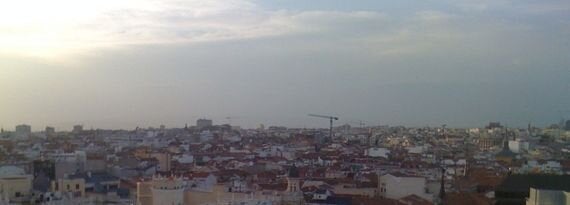
Source: Rachel Cooper
Those of us that live in cities notice it everyday; more people, more traffic, more pollution. According to the UN 54% of the world's population lives in urban areas, and this is expected to increase to 66% by 2050. Predictions suggest there will be 9.3million additional urban residents in the UK by 2062. It is also estimated that cities will be more diverse and home to significantly more older people, but will also accommodate most of growth in the younger age ranges.
So, by 2050 we will need more water, more energy, more food, and our cities will become denser and more compact. We will also have to bear in mind the health and wellbeing of city dwellers as cardiovascular diseases, cancer, chronic respiratory conditions, diabetes, and depression are increasing now. This is likely to be amplified in denser, more polluted environments in the future.
Helene Joffe, Professor of Psychology at UCL, has found that most people's aspirations for living in cities are for friendlier places, with more space and the ability to travel. Generally, we want to be able to travel to see friends and family, we want conviviality, good health, safety, and employment. So the question remains, how can we ensure that we create cities that provide this? How do we ensure that the 'stress's of the urban lifestyle does not compromise our physical and mental wellbeing further? How do we design our cities for our own and our children's future wellbeing?
Here are few tips:
1 Promote physical activity and healthy diet,
Design streets and neighbourhoods with traffic calming measures; provide interconnected street layouts and short blocks, especially to provide a buffer zone between pedestrians, cyclists and traffic to promote walking and cycling. Even better, learn from successful 'Shared Space', like Poynton in Cheshire. Ensure good links to nearby facilities and amenities, especially food stores and health centres; encourage local gardening, local produce and sharing.
2 Design the neighborhood for children
Provide space that is safe for children to play in, and ensure we can see the children from inside homes with windows facing the street. Provide parks and open spaces, including play areas, especially those comprising natural elements such as trees, water, and rocks which stimulate creativity; provide dedicated spaces in neighborhoods for teenagers to 'hang out'.
3 Enable independence in older age
In the neighborhoods, provide a hierarchy of streets from busier, main streets to quieter, residential ones. Ensure footways are wide and smooth, and yet signal danger. Provide adequate toilet facilities.
4 Reduce Stress
Design homes with good sound insulation and optimize natural daylight. On the street: optimize the amount of greenery. Provide quiet, natural spaces that offer opportunities for rest and retreat. In buildings and in city spaces provide clear signage and way-finding cues.
5 Promote positive mood/emotions
Design homes where people can feel private and include interesting features where possible; incorporate human-scale details, such as, flower boxes and balconies. Optimize greenery and views of it and provide space for conviviality and leisure.
6 Facilitate good relationships
Design neighborhoods that have shared space and community spaces; enable social networking digitally and physically. Provide opportunities for "chatting over the fence,"
7 Help make people feel safe from crime
Design in good natural surveillance of public spaces; provide adequate street lighting. Design places and spaces that are easy to maintain.
8 Reduce the sense of crowding
Design public spaces that enable people to move through with ease. Incorporate landmarks and way-finding cues in buildings and neighborhoods, such as, trees, mailboxes, clocks, and towers. Design a sense of space either horizontally or vertically.
9 Make moving about easy
Design public transport systems that are flexible, user friendly, and easy to understand, access and use and that don't pollute. Encourage walking and cycling (see 1 above).
10 In short design cities that are 'easy on the eye', green, clean, accessible, friendly, courteous and affordable.
Rachel Cooper will be speaking about Designing cities for the Future at The Times Cheltenham Science Festival in June. www.cheltenhamfestivals.com. Her work on cities is funded by the Engineering and Physical Sciences Research Council.